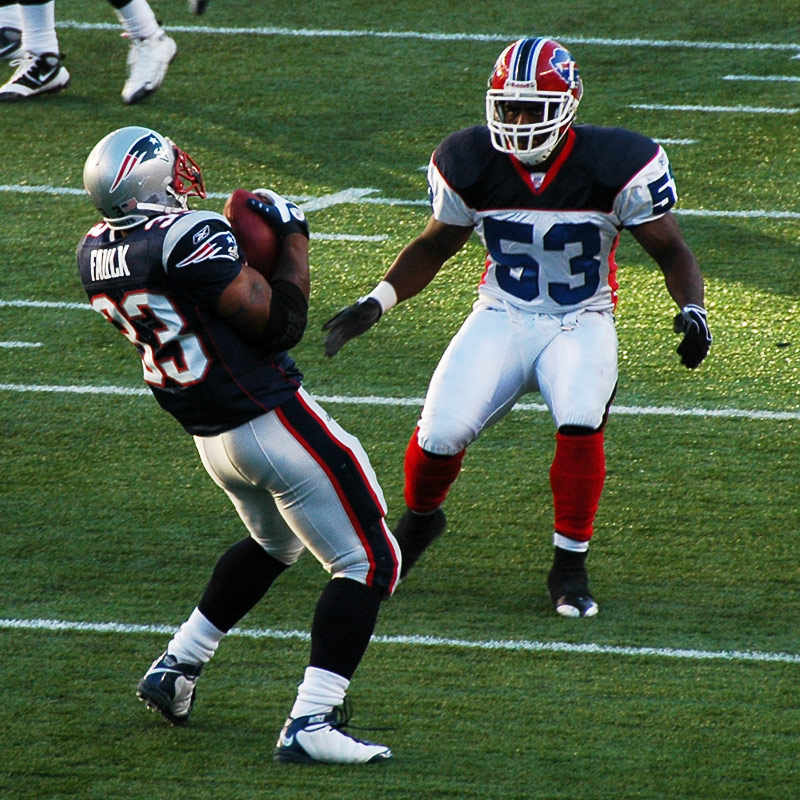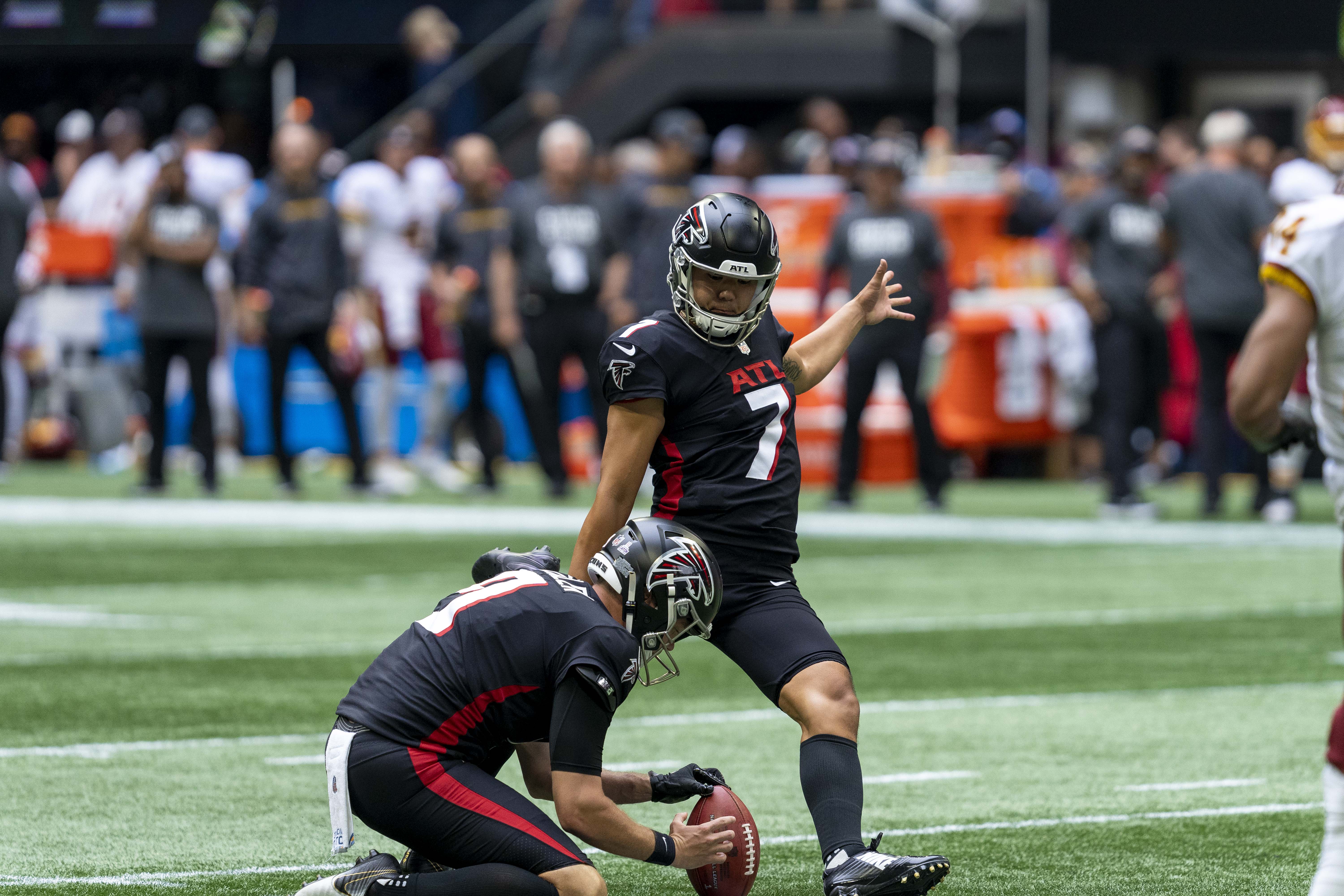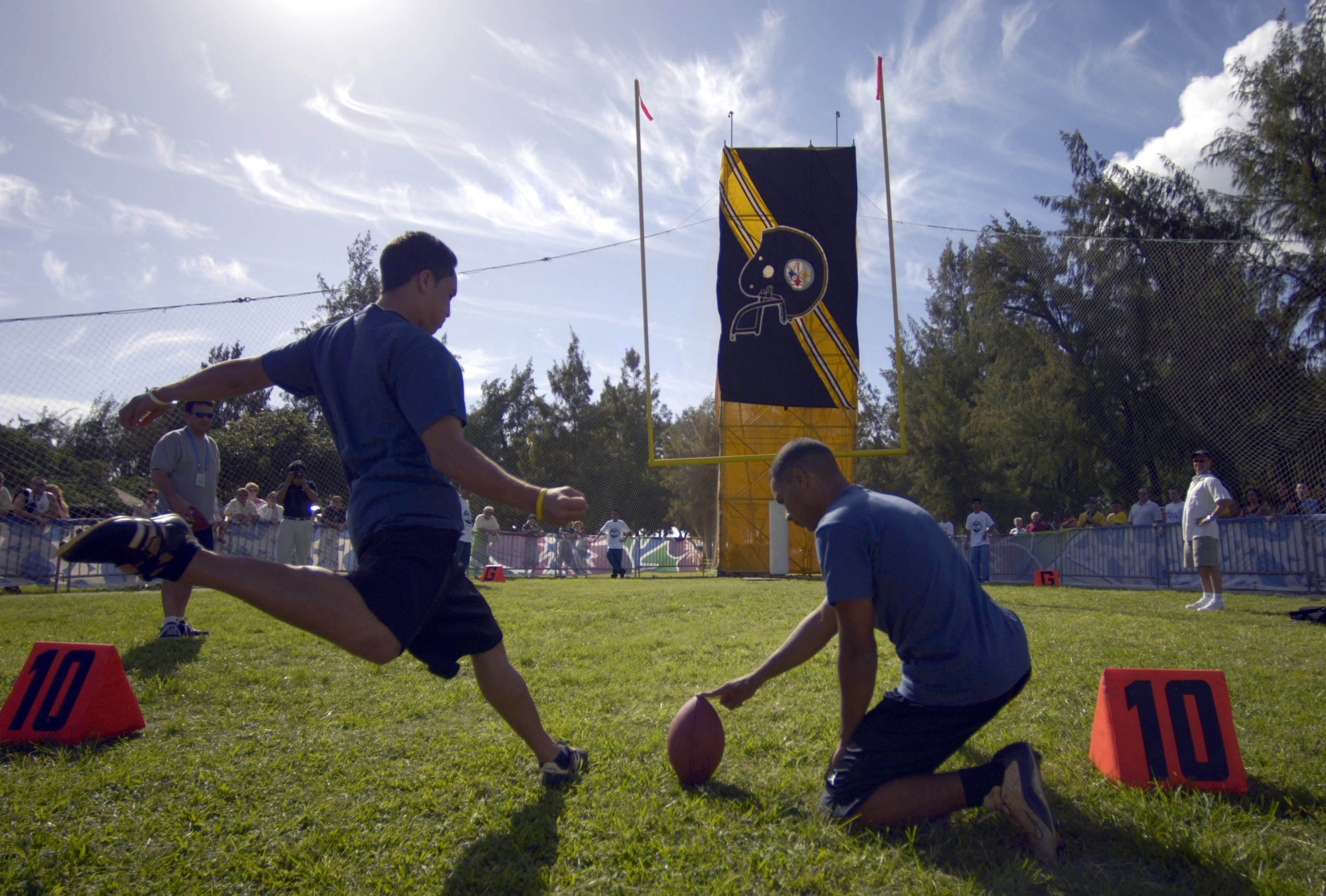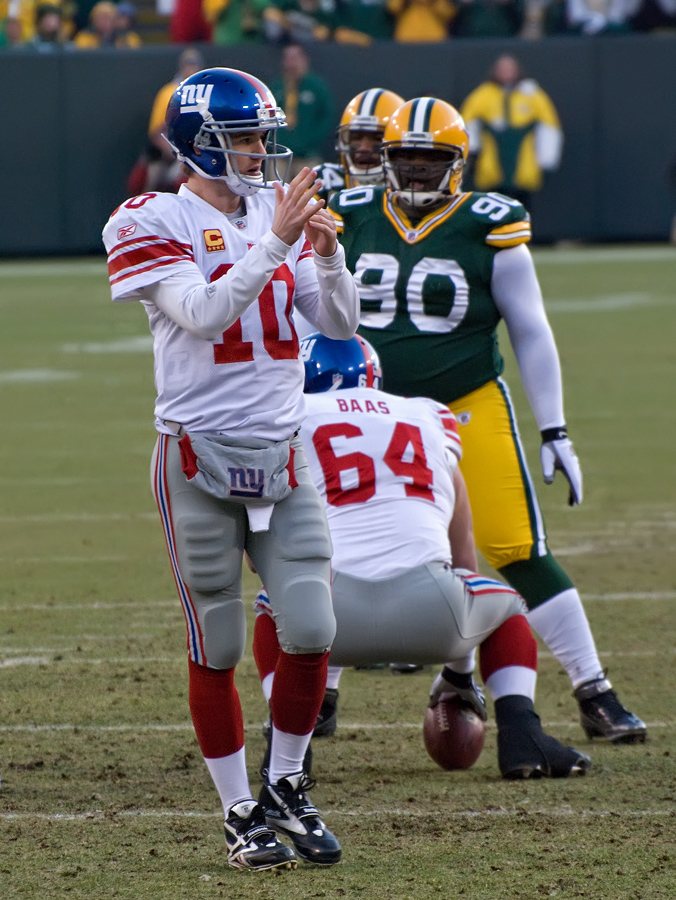|
Clock Management
In gridiron football, clock management is an aspect of game strategy that focuses on the game clock and/or play clock to achieve a desired result, typically near the end of a match. Depending on the game situation, clock management may entail playing in a manner that either slows or quickens the time elapsed from the game clock, to either extend the match or hasten its end. When the desired outcome is to end the match quicker, it is analogous to "running out the clock" (and associated counter-tactics) seen in many sports. Clock management strategies are a significant part of American football, where an elaborate set of rules dictates when the game clock stops between downs, and when it continues to run. In American football Rules for the game clock Upon kickoff, the clock is started when a member of the receiving team touches the ball, or, if the member of the receiving team touches the ball in their end zone, carries the ball out of the end zone. The clock is stopped when the ... [...More Info...] [...Related Items...] OR: [Wikipedia] [Google] [Baidu] |
Gridiron Football
Gridiron football,"Gridiron football" ''Encyclopædia Britannica''. Retrieved October 20, 2010. also known as North American football or, in North America, simply football, is a family of football team sports primarily played in the United States and Canada. American football, which uses 11 players, is the form played in the United States and the best known form of gridiron football worldwide, while Canadian football, which uses 12 players, predominates in Canada. Other derivative varieties include arena football, flag football and amateur games such as Touch football (American), touch and street football (American), street football. Football is played at professional gridiron football, professional, college football, collegiate, High school football, high school, semi-professional, and amateur levels. ... [...More Info...] [...Related Items...] OR: [Wikipedia] [Google] [Baidu] |
Quarterback Spike
In gridiron football, a spike of the ball is a play in which the quarterback intentionally throws the ball at the ground immediately after the snap. Officially an incomplete pass, a spike play stops the clock at the cost of exhausting a down without any gain or loss in yardage. It is principally used when a team is conducting a hurried drive late in a half, and the game clock is running after the previous play. Stopping the clock – particularly when the offense has no timeouts remaining or wishes to conserve timeouts – typically allows the offense more time to plan their next play without losing scarce game clock time. Running a spike play presumes there will be at least one play by the same team immediately afterward, so it cannot be done on fourth down, as it would result in a turnover. Under NCAA, a minimum of three seconds must be on the clock for a spike play, otherwise any spike after will result in the rest of the clock being run off. This restriction does not apply in ... [...More Info...] [...Related Items...] OR: [Wikipedia] [Google] [Baidu] |
Fair Catch
A fair catch is a feature of American football and several other codes of football, in which a player attempting to catch a ball kicked by the opposing team – either on a kickoff or punt – is entitled to catch the ball without interference from any member of the kicking team. A ball caught in this manner becomes dead once caught, i.e., the player catching the ball is not entitled to advance the ball, and the receiving team begins its drive at the spot where the ball was caught. Under NFL and NFHS rules, a team awarded a fair catch is also entitled to attempt a fair catch kick from the spot of the catch; however, this is rarely done. A player wishing to make a fair catch signals his intent by extending one arm above his head and waving it while the kicked ball is in flight. The main reason for a fair catch is to protect the receiver. Because the receiver has to direct his attention toward catching the airborne ball, he cannot focus on opponents running towards him and is usua ... [...More Info...] [...Related Items...] OR: [Wikipedia] [Google] [Baidu] |
Fair Catch Kick
The fair catch kick is a rule at the professional and high school levels of American football that allows a team that has just made a fair catch to attempt a free kick from the spot of the catch. The kick must be either a place kick or a drop kick, and if it passes over the crossbar and between the goalposts of the opposing team's goal, a field goal, worth three points, is awarded to the kicking team. The fair catch kick is considered to be an obscure rule and it is rarely attempted. Because most fair catches are made well out of field goal range, and a team making a fair catch has possession of the ball and a first down, it is rarely to a team's advantage to attempt a fair catch kick rather than run a play from scrimmage. A team may attempt a fair catch kick if it makes a fair catch within reasonable range when the clock expires at the end of either half, as a half must be extended in order to allow a fair catch kick attempt. At the professional level, the last successful fair ... [...More Info...] [...Related Items...] OR: [Wikipedia] [Google] [Baidu] |
Buzzer Beater
In basketball and other such timed sports, a buzzer beater is a shot that is taken before the game clock of a quarter, a half (if the half is the second one, then, a game), or an overtime period expires but does not go in the basket until after the clock expires and the buzzer sounds hence the name "buzzer beater". The concept normally applies to baskets that beat an end-of-quarter/half/overtime buzzer but is sometimes applied to shots that beat the shot clock buzzer. Officials in the National Collegiate Athletic Association, National Basketball Association, Women's National Basketball Association, Serie A (Italy), and the Euroleague ( Final Four series only, effective 2006) are required to use instant replay to assess whether a shot made at the end of a period was in fact released before the game clock expired. Since 2002, the NBA also has mandated LED light strips along the edges of the backboard and the edge of the scorer's table for the purposes of identifying the end of a pe ... [...More Info...] [...Related Items...] OR: [Wikipedia] [Google] [Baidu] |
Field Goal (gridiron Football)
A field goal (FG) is a means of scoring in gridiron football. To score a field goal, the team in possession of the ball must place kick, or drop kick, the ball through the goal, i.e., between the uprights and over the crossbar. The entire ball must pass through the vertical plane of the goal, which is the area above the crossbar and between the uprights or, if above the uprights, between their outside edges. American football requires that a field goal must only come during a play from scrimmage (except in the case of a fair catch kick) while Canadian football retains open field kicks and thus field goals may be scored at any time from anywhere on the field and by any player. The vast majority of field goals, in both codes, are place kicked. Drop kicked field goals were common in the early days of gridiron football but are almost never done in modern times. In most leagues, a successful field goal awards three points (a notable exception is six-man football in which, due to the ... [...More Info...] [...Related Items...] OR: [Wikipedia] [Google] [Baidu] |
Placekicker
Placekicker, or simply kicker (PK or K), is the player in gridiron football who is responsible for the kicking duties of field goals and extra points. In many cases, the placekicker also serves as the team's kickoff specialist or punter. Specialized role The kicker initially was not a specialized role. Prior to the 1934 standardization of the prolate spheroid shape of the ball, drop kicking was the prevalent method of kicking field goals and conversions, but even after its replacement by place kicking, until the 1960s the kicker almost always doubled at another position on the roster. George Blanda, Lou Groza, Frank Gifford and Paul Hornung are prominent examples of players who were stars at other positions as well as being known for their kicking abilities. When the one-platoon system was abolished in the 1940s, the era of "two-way" players gave way to increased specialization, teams would employ a specialist at the punter or kicker position. Ben Agajanian, who started his ... [...More Info...] [...Related Items...] OR: [Wikipedia] [Google] [Baidu] |
Field Goal Range
Field goal range is the part of the field in American football where there is a good chance that a field goal attempt will be successful. A field goal is normally 17 yards (7 yards in Canadian football) longer than the distance of the line of scrimmage to the goal line, as it includes the end zone (10 yards) and 7 yards to where the holder places the ball. In Canadian football, the goal posts are on the goal lines, in front of the end zones. Therefore, if the line of scrimmage is at the 30, the field goal would be 47 yards (in American football) or 37 yards (in Canadian football). Average field goal range The exact field goal range varies for each team, depending on the ability of the team's placekicker. While some weaker placekickers may have trouble kicking field goals longer than 30 yards (making field goals from beyond the 13 difficult), others may consistently make 50-yarders, making it practical to kick from beyond the 33. For most NFL kickers, the 35-yard line is typically ... [...More Info...] [...Related Items...] OR: [Wikipedia] [Google] [Baidu] |
Red Zone (gridiron Football)
In gridiron football, the red zone is the area of the field between the 20-yard line and the goal line. The red zone official meaning is the scoring zone during the process of playing the game and, though some professional stadiums may have a decorative stripe indicating the 20-yard line (usually either team colors, or a red-white-blue stripe; some fields have it placed at the 25-yard line instead), the zone is not red-colored, and merely a statistical delineation. The term is mostly for statistical, psychological, and commercial advertising purposes (radio networks have been known to sell sponsorship of the red zone whenever the home team enters it). It is said to be a place where the chances of scoring are statistically higher. Being closer to the end zone, play while in the red zone involves closer cramping of the offense and defense. The short field of play means safety (football position), safeties have a smaller area to worry about defending, wide receivers do not have to run ... [...More Info...] [...Related Items...] OR: [Wikipedia] [Google] [Baidu] |
Lateral Pass
In gridiron football, a lateral pass or lateral (officially backward pass in American football and onside pass in Canadian football) occurs when the ball carrier throws the football to a teammate in a direction parallel to or away from the opponents' goal line. A lateral pass is distinguished from a forward pass, in which the ball is thrown forward, towards the opposition's end zone. In a lateral pass the ball is not advanced, but unlike a forward pass a lateral may be attempted from anywhere on the field by any player to any player at any time. While the forward pass is an invention of the North American games, the lateral and backward pass is also a part of rugby union and rugby league, where such passes are the norm. Compared to its use in rugby, laterals and backward passes are less common in North American football, due to a much greater focus on ball control in American football strategy; they are most commonly used by the quarterback, after taking the snap, to quickly tran ... [...More Info...] [...Related Items...] OR: [Wikipedia] [Google] [Baidu] |
Time-out (sport)
In sports, a time-out or timeout is a halt in the play. This allows the coaches of either team to communicate with the team, e.g., to determine strategy or inspire morale, as well as to stop the game clock. Time-outs are usually called by coaches or players, although for some sports, TV timeouts are called to allow media to air commercial breaks. Teams usually call timeouts at strategically important points in the match, or to avoid the team being called for a delay of game-type violation, such as the five-second rule in basketball. List of time-out rules by sport Baseball Baseball players and managers of both the offense and defense can request time out for a number of purposes, such as for a batter to step out of the batter's box to better prepare for a pitch, a foreign object entering a batter's eye such as dust or a bug, for a manager to speak with a player or umpire, or to replace one player with another (for which a time-out is required by the rules), etc. The request ... [...More Info...] [...Related Items...] OR: [Wikipedia] [Google] [Baidu] |
Incomplete Pass
An incomplete pass is a term in gridiron football which means that a legal forward pass is not successfully caught by an eligible offensive player within the field of play. An incomplete pass can occur if (1) the ball hits the ground in the field of play before a player on either team gains possession; (2) the ball is caught by a player on either team who, at the moment of possession is out of bounds; or (3) the ball is thrown outside the field of play. An incomplete pass causes the down to advance by one and the offensive team gains no yards. The game clock is stopped. Becoming a fumble or interception If the receiver catches the ball and has possession of it, then loses control of it for any reason and a player from the other team catches it a fumble is called. In the NFL, both feet must be in bounds and the player must have clear control of the ball and make a football move or have the ability to perform such an act. In other leagues, only one foot must be in bounds with clea ... [...More Info...] [...Related Items...] OR: [Wikipedia] [Google] [Baidu] |






